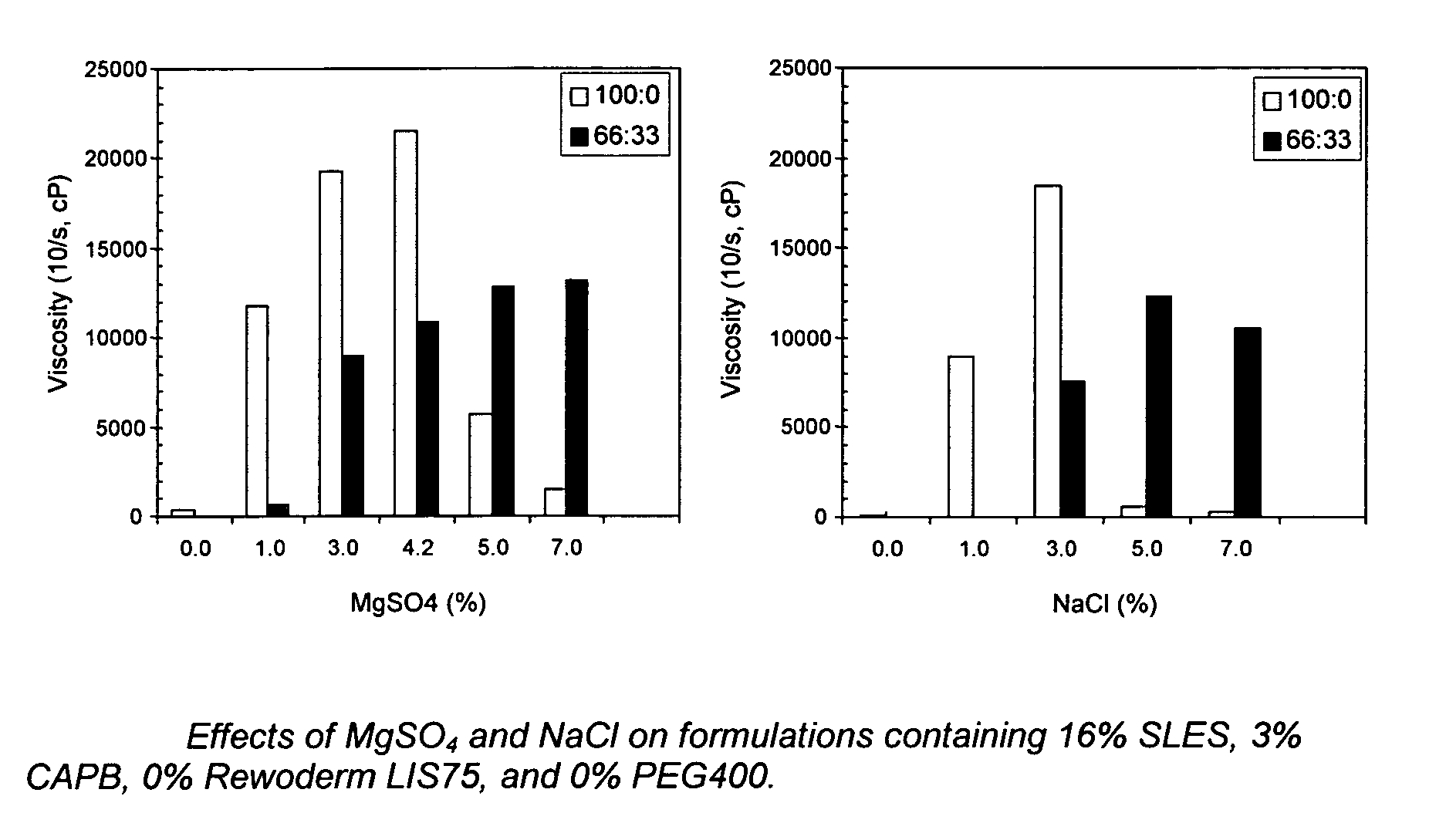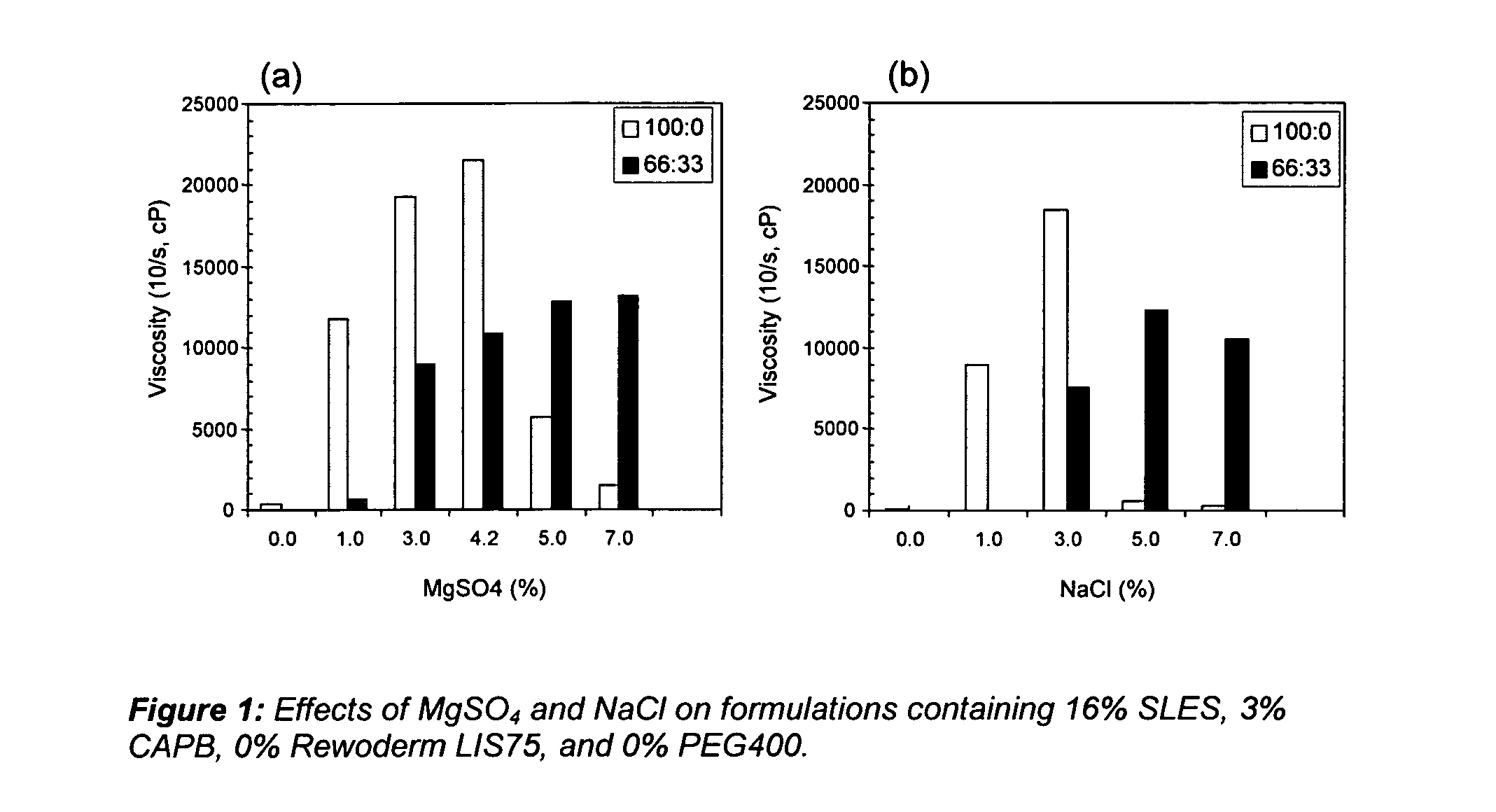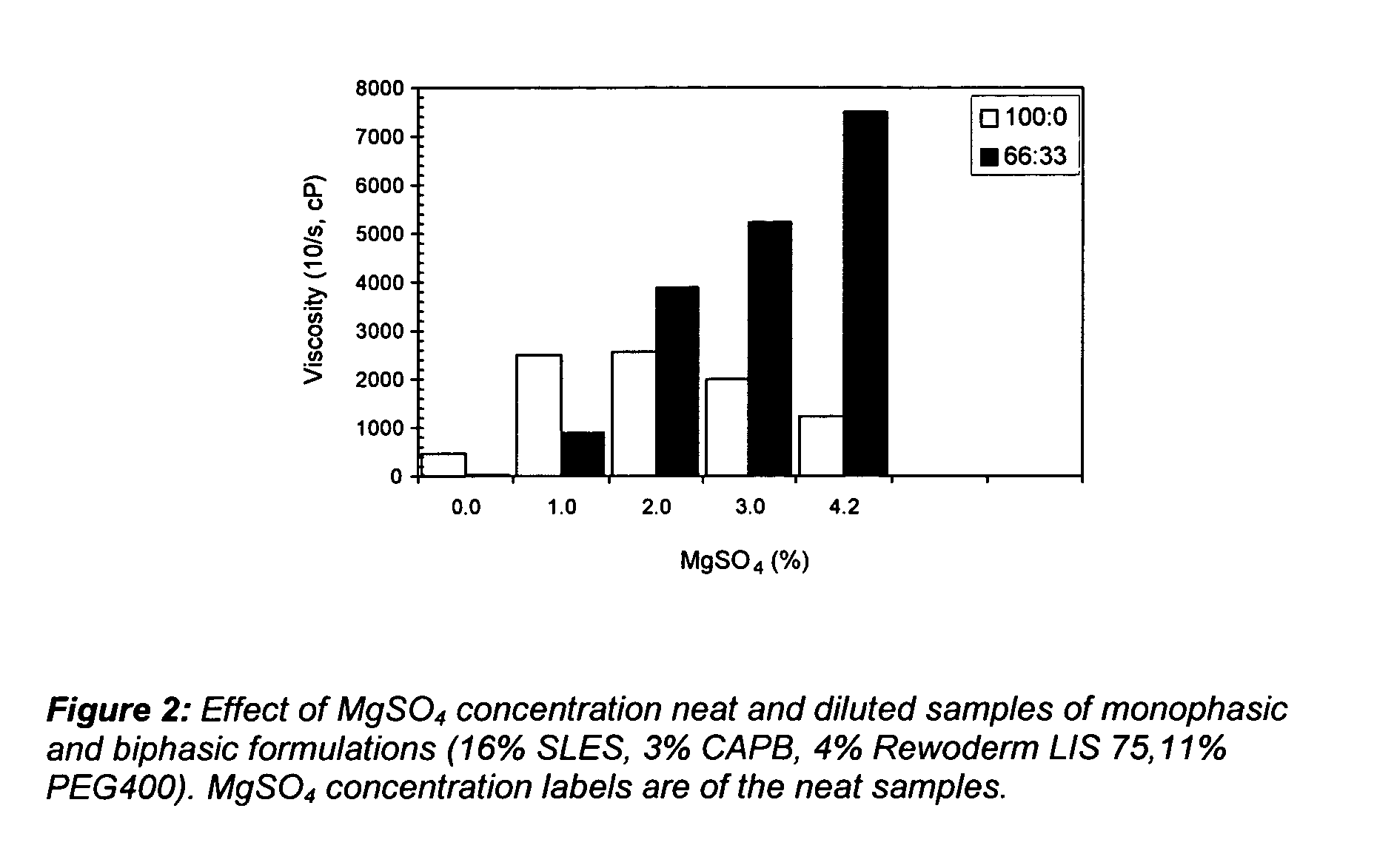Process for lowering level of salt required for dilution thickening
a technology of dilution thickening and salt, which is applied in the direction of liquid soap, make-up, detergent compounding agents, etc., can solve the problems of difficult spreading and general perception of dilution thickening compositions as readily rinsable, and achieve enhanced rinse retention, high viscosity, and high dilution ratio
- Summary
- Abstract
- Description
- Claims
- Application Information
AI Technical Summary
Benefits of technology
Problems solved by technology
Method used
Image
Examples
example 1
In order to show the dilution thickening effect and amount of salt normally needed to cause the effect, applicants prepared compositions s follows:
SLES16%CAPB 3%Thickener 0%PEG 400 0%
Levels of salt (MgSO4 and NaCl) varied from 0 to 9% and viscosities were tested both neat (100:0) and at dilution of 66:33. Results are set forth in FIGS. 1(a) and 1(b).
As discussed in the specification above, when no polymeric thickener is used, the diluted thickening effect is not seen until 5% salt is used.
By contrast, applicants tested compositions having formulation as follows:
SLES16%CAPB 3%Rewoderm (LIS75) 4%PEG 40011%
Results under varying levels of MgSO4 are seen in FIG. 2. With thickener, it can be seen that level of salt to induce dilution thickening is as low as 2%. Thus, this thickener clearly induces a shift.
example 2
In order to show difference in dilution behavior of salts with or without thickener, applicants tested the following formulation:
SLES16%CAPB 3%PEG 400 0%MgSO4 5%Rewoderm LIS75 4% or 0%
The results are set forth in FIGS. 3a and 3b.
As can be clearly seen, rheologically the thickener imparts higher viscosity increases throughout the dilution process and maintains the effect of higher dilution. Specifically without thickener at 5% MgSO4, the absolute viscosity drops sharply after about a 50:50 dilution ratio. With 4% Rewoderm LIS75 at the same salt concentration, dilution thickening is observed up to 40:60 dilution, and the drop off is more gradual. The overall viscosities of the samples with thickener were also higher. Plotted as percent ratios between the initial and diluted viscosities of the samples, FIG. 3b, the thickener gave more dilution thickening effect, i.e. the viscosity ratios are higher with thickener than without. Moreover, after the drop off in viscosities, diluted ...
example 3
In order to show effect of salt concentration and type, applicants tested the following compositions:
SLES16%CAPB 3%Rewoderm LIS75 4%PEG 40011%Salt (Varying) 4%
Results are set forth in FIG. 4.
FIG. 4 shows the viscosities of the neat and diluted samples containing various salts. At 4% salt, the neat samples containing ZnSO4, MgSO4, and Na2SO4 appeared most viscous. MgCl2, KCl, and NaCl have little thickening effect on the initial composition of SLES, CAPB, PEG400, and Rewoderm LIS75. However, upon dilution, the monovalence salts KCl and NaCl produced tremendous increases in viscosities to form very viscous gels. ZnSO4 and MgSO4 were also effective at producing large dilution thickening.
Dilution thickening is observed for all soluble salts at 4%. Comparatively, at 66:33 dilution, as much as 20 times increase in the viscosity is observed with NaCl and KCl, 3 to 6 times for MgCl2, MgSO4, and ZnSO4, and minor increase was observed with Na2SO4. Effect with CaCl2 was not certain due ...
PUM
| Property | Measurement | Unit |
|---|---|---|
| Fraction | aaaaa | aaaaa |
| Fraction | aaaaa | aaaaa |
| Percent by mass | aaaaa | aaaaa |
Abstract
Description
Claims
Application Information
 Login to View More
Login to View More - R&D
- Intellectual Property
- Life Sciences
- Materials
- Tech Scout
- Unparalleled Data Quality
- Higher Quality Content
- 60% Fewer Hallucinations
Browse by: Latest US Patents, China's latest patents, Technical Efficacy Thesaurus, Application Domain, Technology Topic, Popular Technical Reports.
© 2025 PatSnap. All rights reserved.Legal|Privacy policy|Modern Slavery Act Transparency Statement|Sitemap|About US| Contact US: help@patsnap.com



